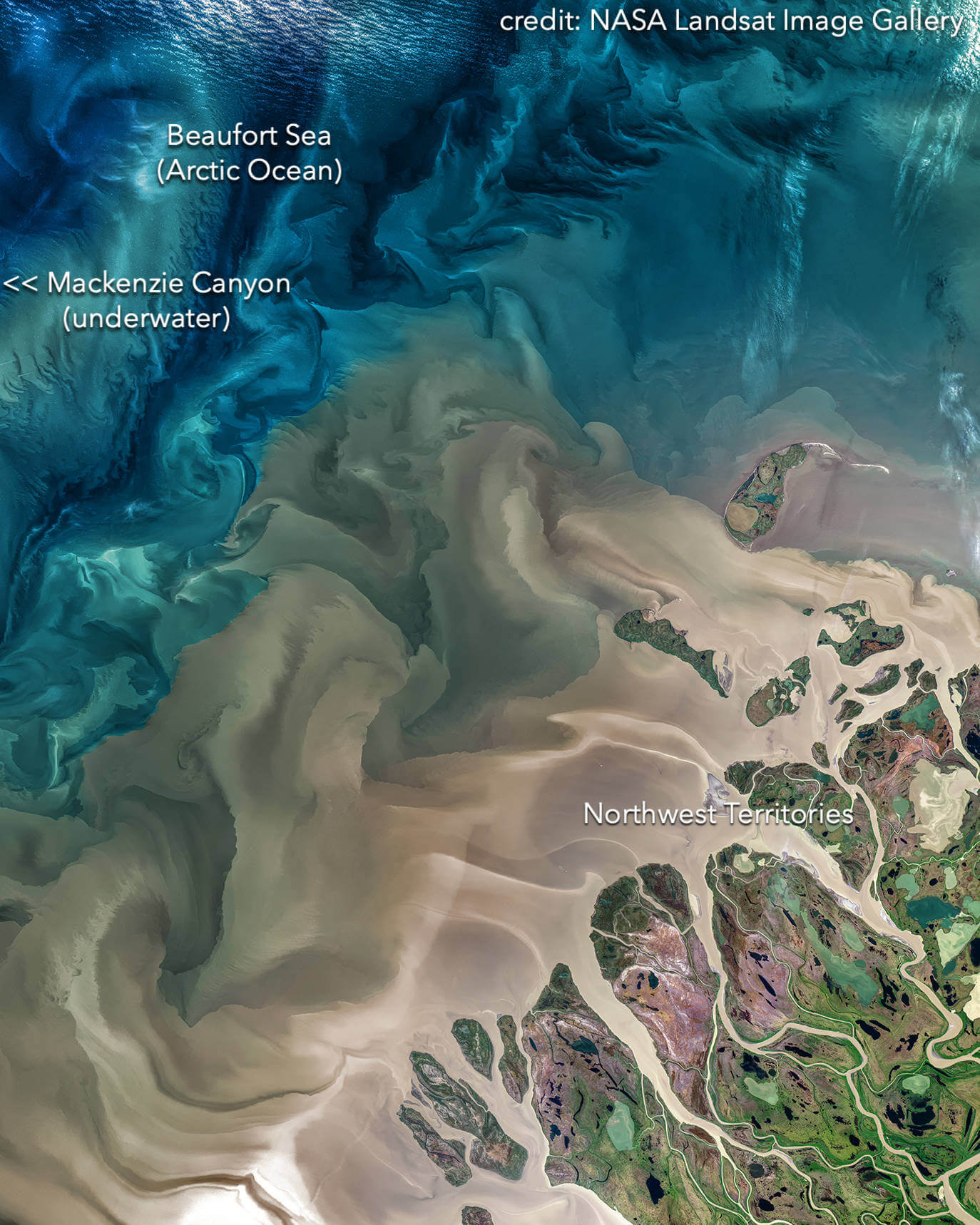
Numerical Modelling of Circulation and Upwelling in Mackenzie Canyon
- Duration: September 2015 - April 2019
- Role: Primary researcher, graduate student
- Research Group: Mesoscale Ocean and Atmospheric Dynamics group at the University of British Columbia with Dr. Susan Allen (graduate supervisor and project director).
- Project Objective: To investigate the physical mechanisms driving ocean circulation and upwelling in Mackenzie Canyon (a submarine canyon in the Arctic Ocean, offshore of the Yukon and Northwest Territories).
- Project Approach:
- Developed a computer model that simulates physical oceanographic conditions (water properties, such as salinity and temperature, and horizontal and vertical velocities of ocean currents) in Mackenzie Canyon and southeastern Beaufort Sea.
- Designed case studies testing the effects of winds, regional topography, regional stratification, and model resolution on the simulated circulation and upwelling in the region.
- Evaluated performance of computer model by comparing simulation results with ship-board, observational data.
- Analyzed and presented model results using data science and data visualization techniques.